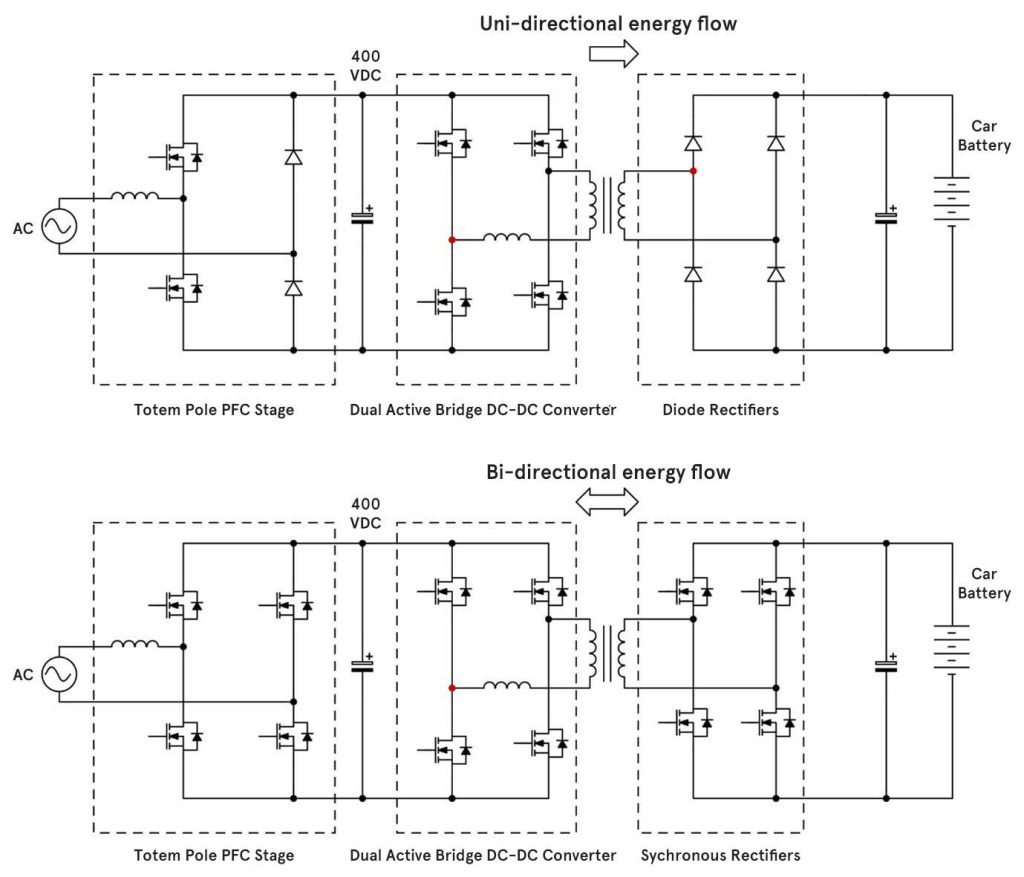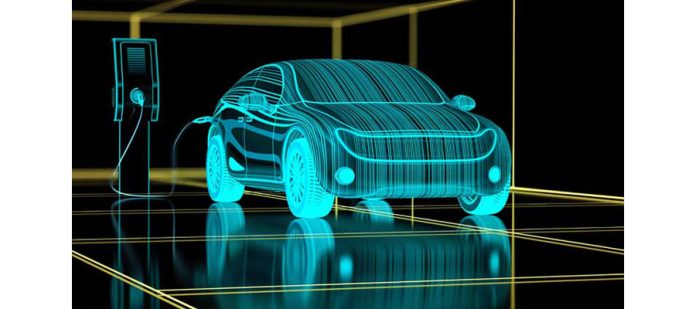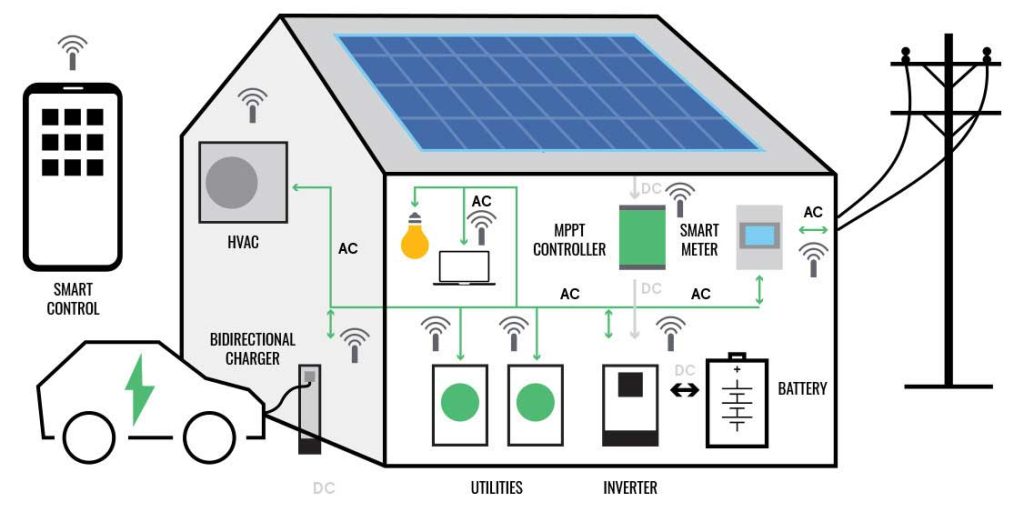Courtesy: Avnet
Anyone with a recently built car will probably have one or more buttons that they don’t use or don’t even know how to use. “Off-road” mode for an SUV used for the school run might be an example.
Another one in electric vehicles (EVs) that could rouse some curiosity soon is a button to enable bi-directional charging, or more correctly “bi-directional power transfer (BPT) in the on-board battery charger.” This is a feature of EVs that would make energy stored in the battery available for purposes other than traction. Another generic term is V2X or “Vehicle to (something)” power transfer.
Given widespread concerns about how long it takes to add range to an EV from the available charge points, it might seem odd that the ability to drain it away again might be seen as advantageous. There are reasons though why it can be a good thing, and we’ll look at these now.
Why do it?
The reason often given for BPT in EVs is that utility providers will give credit for energy returned to the grid to enable “peak shaving,” or providing an energy buffer for peak demands on the grid. Otherwise, utilities would have to bring extra power sources online at high cost to avoid outages. Timing is the issue here. EVs will often be “plugged in” overnight to charge, sometimes at a lower tariff, and this is when excess energy might be available. Peak demands are typically during the day when industry is operating. Of course, when EV adoption is ubiquitous, EVs will become a peak demand themselves as people return from work and plug in.
Those with solar power will be familiar with the principle of “feed-in” to the grid. But remember that after the capital expense, solar energy is effectively free so any credit is significant. Energy in EV batteries must be bought initially, so the benefit is the difference between debit and credit, which might be small or even negative. However, estimates show that a typical EV owner could save around $420 each year or $4,000 over the vehicle’s lifetime.
This hardly offsets the current extra cost of an EV over an internal combustion engine, but the owner might take the wider view to include environmental benefits and overall cost to society. With the increasing adoption of intermittent alternative energy sources such as solar and wind, EV batteries are seen as a valuable reserve to draw on by the utilities, making their argument for feed-in more compelling.
Another use for energy returned from the battery is V2H or “Vehicle to Home.” This could include groups of homes and even small businesses in a microgrid. Here, local alternative energy sources are combined with a grid connection and the energy storage in EVs to potentially provide independence from the grid for cost savings and resilience to power outages–if the EV is parked and connected. If not, then a wall-mount battery might be needed. Forward-looking property developers could include this in new builds. The capital cost to retrospectively install the infrastructure with the appropriate safety features is high.
A simpler “Vehicle to Load” arrangement might be a standard AC power socket on the EV, which could power hand tools outside or lighting when camping. Also, as battery-powered vehicles are adopted in the construction industry, the V2L AC power source will become an alternative to polluting and noisy diesel generators. The ability to provide power at emergency scenes from heavy-duty vehicles is also seen as a potential asset. This was done at the Fukushima nuclear plant disaster in March 2011.
Regulatory pressures
Whether the use cases described can be justified, authorities have taken the longer view and urged the automotive industry to include BPT in EVs. California, for example, got some way toward approving a bill in the state legislature to require all new EVs sold to include BPT. This was dropped after some opposition because of the extra cost expected to be added to an EV.
Other countries have initiatives such as the UK’s “Electric vehicle smart charging action plan” to help meet the UK’s 2050 climate change targets. Still, the plan identifies V2H as a challenge.
Major European auto manufacturers are including BPT in their roadmaps. In the U.S., GM announced that all its EVs will be bi-directional by 2026 and Tesla said its EVs will be by 2025. To support its introduction, BPT is now embedded in standard ISO 15118-20, which specifies the communications interface and charging infrastructure needed.
What’s available?
The first thing to note is that BPT is only applicable (at least now) to the vehicle onboard charger. Fast DC chargers are overwhelmingly situated at public stations and serve users who need to add range quickly to continue a journey. There are bi-directional DC chargers rolled out in trials, but most applications are, and will be, AC wall boxes, mostly Level 1 up to around 2kW and some Level 2 up to around 22kW. Note though that the return power is often pegged to a low rate, as low as 2.2kW for the MG ZS EV for example, and only up to 3.6kW for several makes, at about half of the battery charge rates.
An analysis of the online database of EVs by IEEE dated September 2023 identified just nine EVs available with bi-directional chargers, with a mix of DC and AC outputs.
Implementation of bi-directional power transfer
One of the reasons why BPT is promoted is because it’s a perceived added value that is relatively low cost to implement in a vehicle. The development of all the security, safety and control electronics and software is surely extremely complex, and this is why BPT-enabled EVs might initially be more expensive to recoup the costs, but the final hardware is a little different in the vehicle.
The reason for this is that on-board chargers have been continuously developed to be more efficient for the fastest charge time and smaller and lighter to not adversely affect range. This is in part achieved by replacing power diodes in various positions with MOSFETs, either silicon or silicon-carbide, which drop lower voltage and produce less dissipation. This saves energy and reduces heatsinking size, weight and costs. The MOSFETs can then also be configured to act as switches, reversing their function from rectification to power switching.
The outline principle is shown in the diagram. The circuit at the top is uni-directional, whereas the circuit at the bottom uses MOSFETs as synchronous rectifiers for bi-directional operation. The Totem Pole PFC stage with diodes now becomes an inverter and the symmetry of the isolated Dual Active Bridge DC-DC stage arrangement is seen, allowing power flow in either direction, depending on the control scheme.
The four MOSFETs in the primary of the DAB converter act as diodes in the reverse power flow direction, either by simply using their body diodes with the channels off, or for best efficiency, they are driven as synchronous rectifiers. The second circuit has become common anyway for best efficiency in uni-directional applications so is easily modified for reverse power flow simply by changing the gate drive control algorithms.

With the momentum of climate protection legislation behind it, bi-directional power transfer in EVs is a feature that will become common. Unlike some features in modern cars, the button that enables it could be one we eventually appreciate for its cost and environmental benefits.










